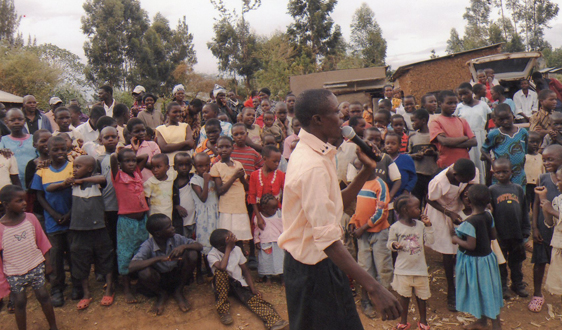One of Redeemer’s young men graduated from college today. New York University’s commencement ceremony filled a good bit of Yankee Stadium. The president of NYU, John Sexton, gave a talk about how NYU was founded by Albert Gallatin in 1831 (when New York was still a small city) to be a university “in and of the city.” He talked about how NYU has never strayed from the mission of being a vibrant part of New York City but has expanded to become an influence in the world. The graduating class of about 12,000 included representatives from every state and about 133 countries. He described what NYU’s transformation as becoming “glocal”—a combination of the words “global” and “local.”
What he described is what had been happening at Redeemer. As we continued to serve the local neighborhood, we were becoming the faith home of people from many countries—all of whom were becoming active in our neighborhood and ministry. All of them lived with a five-mile radius. They were part of our neighborhood.
Most of our newer members were from Tanzania, but there were about five other African countries represented and a few European and Asian countries as well. Early on, we had determined that we didn’t want to be separate faith communities sharing a building. We worshiped and worked together.
We believe that this approach to ministry has a strong future. Unfortunately, our bishop refused to recognize our African members even though some of them had worshiped with Redeemer for as many as 10 years.
Bishop Claire Burkat was so intensely focused on acquiring our property that she counted only our white members and dismissed our black members, saying
“White Redeemer must be allowed to die. Black Redeemer . . . we can put them anywhere.”
Why? Why didn’t our faithful African members count? Why did white Redeemer . . . who were relatively young and vibrant . . . have to go anywhere? Redeemer had successfully charted a new course without shutting people out.
This divisive inanity is even more difficult to understand when we read of SEPA’s assigned ties as a sister synod to part of Tanzania. This prompted one Redeemer member to comment, “Bishop Burkat thinks Tanzanian Lutherans are great . . . as long as Tanzanian Lutherans stay in Tanzania.”
It remains a puzzle why a synod dedicated to teaming with Tanzanian Lutherans would treat local Tanzanian immigrants in such a condescending manner. Redeemer’s members should have been valued as a potential strength in building this international bond. Instead, they were evicted from Redeemer’s property along with “white Redeemer.”
Nevertheless, Redeemer continues its ministry and although we didn’t coin the term “glocalization,” we understand it, are practicing it, and think that it is a concept that must be explored by every congregation that exists in a changing demographic. Local people from the older part of a changing demographic must not be made to feel that they have been replaced and are no longer welcome.
Newer members of emerging demographics must become active as quickly as possible. It is absolutely absurd to insist that all members of a glocalized church be evicted to facilitate the ending of one demographic while distant regional leadership tries to figure out how to minister in the neighbhorhoods they just wrote off.
Redeemer’s ministry continues to define and redefine the “Glocal Church.” We are making contact with ministries all over the world. We don’t have a manual for how to minister this way, but we are taking notes. We may write one!





